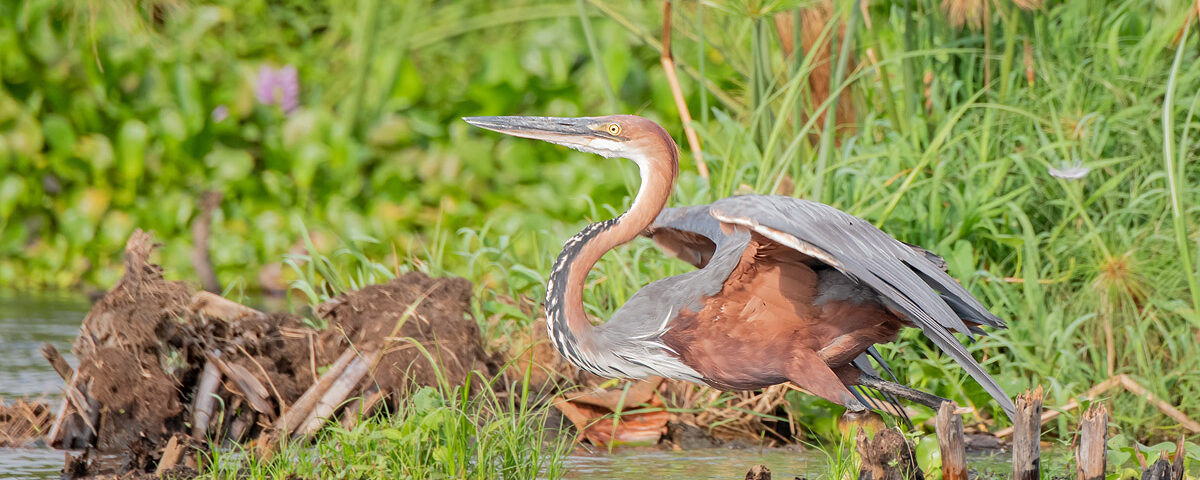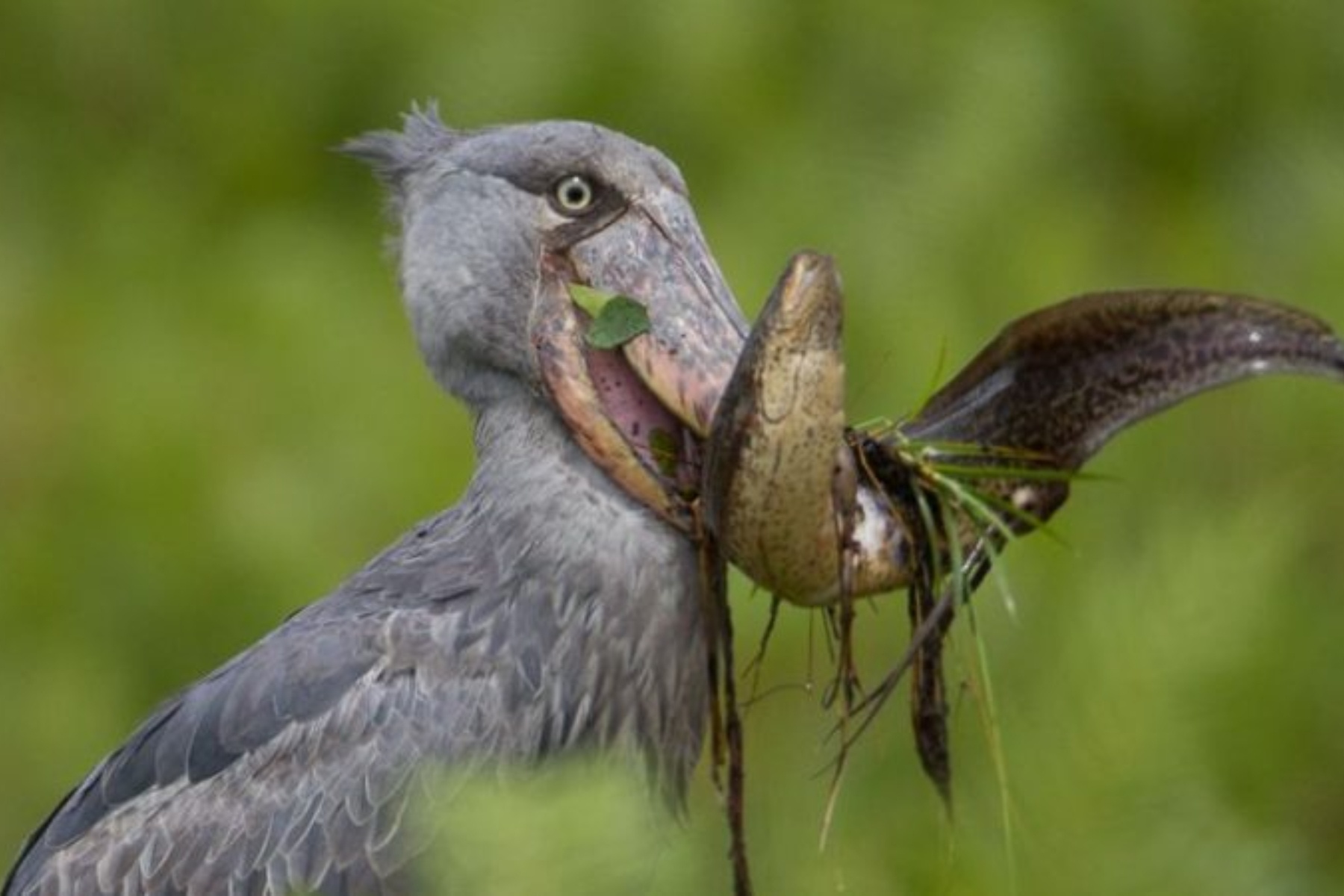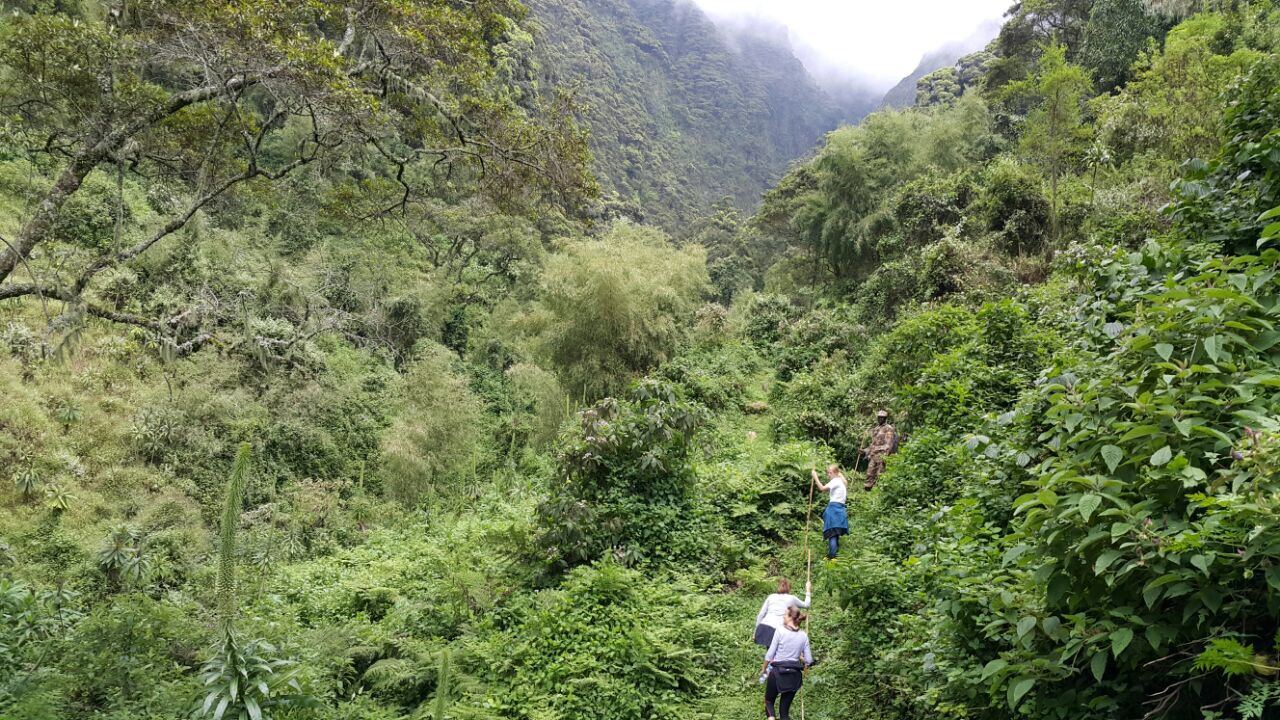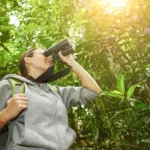
Can I Rent Binoculars for Birding Safaris in Uganda?
September 22, 2025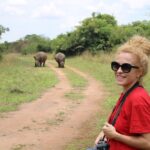
Can I See Elephants on a Walking Safari in Uganda?
September 23, 2025Can I See Albertine Rift Endemics in Uganda?
One of the most frequently asked questions by wildlife enthusiasts is, “Can I see Albertine Rift endemics in Uganda?” The answer is an emphatic yes. Uganda, often called the “Pearl of Africa,” is renowned for its rich biodiversity, encompassing lush forests, volcanic mountains, and pristine wetlands. It lies within the Albertine Rift, a biodiversity hotspot in East Africa, home to many endemic species found nowhere else in the world. These unique habitats are central to Uganda Safaris, Uganda Birding Safaris, and Uganda Wildlife Safaris, making the country a top destination for travelers seeking rare and extraordinary wildlife encounters.
The Albertine Rift region in Uganda includes areas such as Bwindi Impenetrable Forest, Mgahinga Gorilla National Park, Kibale Forest, and Semuliki National Park. These parks are not only famous for hosting endangered mountain gorillas and chimpanzees but are also home to hundreds of bird species, many of which are endemic. Tour operators like Nkofu Africa Safaris help travelers plan visits that maximize sightings of Albertine Rift endemics while combining activities like Uganda Gorilla Trekking Safaris, Uganda Chimpanzee Safaris, and cultural experiences, creating a well-rounded Uganda Best Safaris itinerary.
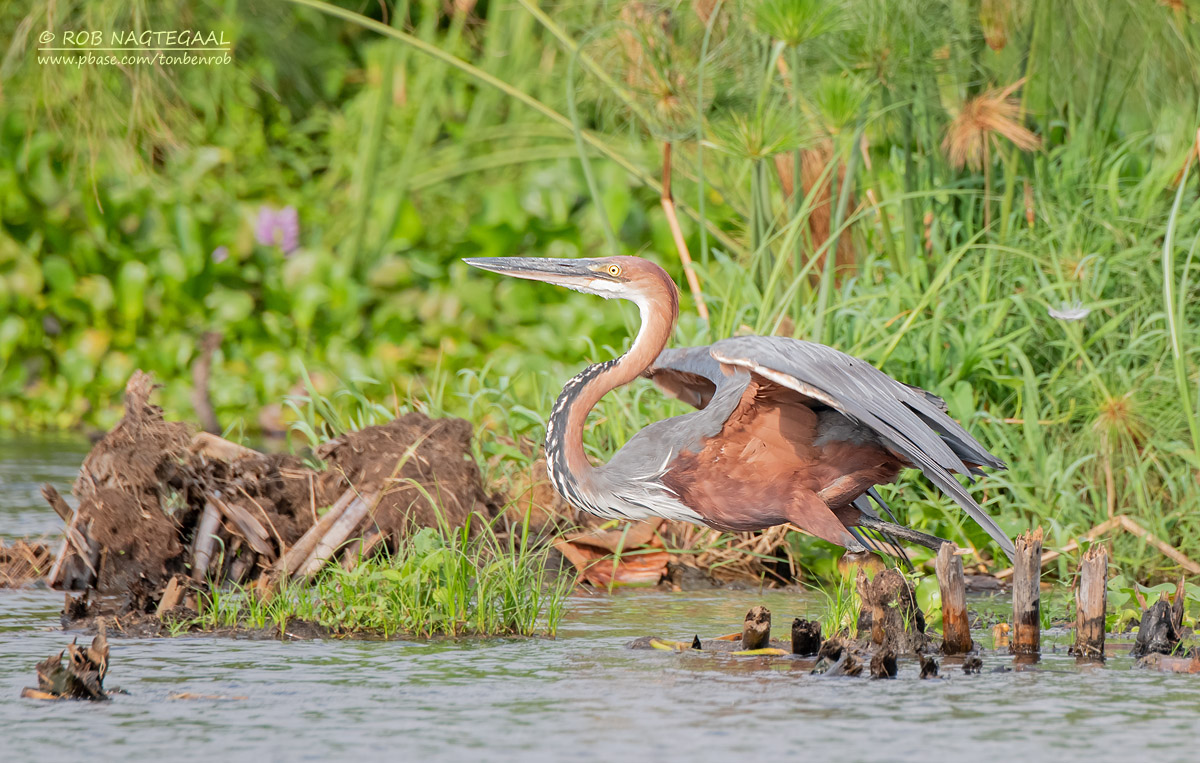
Can I See Albertine Rift Endemics in Uganda?
What Are Albertine Rift Endemics and Why Are They Important?
Travelers often ask, “What exactly are Albertine Rift endemics, and why should I care?” Albertine Rift endemics refer to species of plants, birds, mammals, amphibians, and insects that are native to the Albertine Rift region and exist nowhere else on Earth. This includes species like the African green broadbill, the Rwenzori turaco, and the mountain gorilla. The uniqueness of these species makes them a major draw for international wildlife tourists seeking experiences beyond traditional safari sightings.
The conservation importance of these endemics cannot be overstated. Many are rare, threatened, or endangered, and their habitats are often fragile ecosystems vulnerable to human activity. Participating in Uganda Birding Safaris, Uganda Chimpanzee Safaris, or Uganda Gorilla Trekking Safaris allows travelers to observe these species responsibly, contributing to ongoing conservation efforts. Nkofu Africa Safaris emphasizes ethical wildlife viewing, ensuring that encounters with Albertine Rift endemics are conducted sustainably, enhancing Uganda’s global reputation as a leader in Uganda Wildlife Safaris and Uganda Best Safaris experiences.
Which Parks Are Best for Viewing Albertine Rift Endemics?
A common question is, “Which parks in Uganda offer the best chances to see Albertine Rift endemics?” Some of the top destinations include Bwindi Impenetrable Forest, Mgahinga Gorilla National Park, Kibale Forest, Semuliki National Park, and the Rwenzori Mountains National Park. Each of these locations hosts unique ecosystems with dense forests, montane habitats, and wetlands where endemic species thrive.
Bwindi Impenetrable Forest is famous for mountain gorillas but also hosts bird species like the African green broadbill and the Grauer’s swamp warbler. Mgahinga Gorilla National Park, with its volcanic peaks and bamboo forests, supports species such as the Rwenzori turaco and red-faced woodland warbler. Kibale Forest is a haven for chimpanzees and hosts over 375 bird species, including Albertine Rift endemics. Nkofu Africa Safaris designs itineraries that allow travelers to combine Uganda Gorilla Trekking Safaris with birding excursions, forest walks, and Uganda Cultural Safaris, making it easier to experience both iconic wildlife and rare endemic species in one trip.
How Can I Spot Albertine Rift Birds in Uganda?
Many birding enthusiasts ask, “How can I increase my chances of spotting Albertine Rift birds?” Guided tours are essential, as professional bird guides can identify subtle calls, nests, and feeding behaviors that most visitors would miss. Early morning treks are ideal because birds are most active during cooler hours, especially in dense forests like Kibale and Bwindi.
Key endemic birds include the Rwenzori turaco, Grauer’s swamp warbler, and the African green broadbill. Combining birding with Uganda Gorilla Trekking Safaris or Uganda Chimpanzee Safaris allows travelers to optimize time in the forests while experiencing multiple wildlife highlights. Nkofu Africa Safaris provides expert-led Uganda Birding Safaris that focus on both endemic species and other notable birds, ensuring a fulfilling and memorable adventure while maintaining ethical and sustainable wildlife practices.
Can I Combine Gorilla Trekking With Viewing Endemics?
A common question among travelers is, “Can I combine Uganda Gorilla Trekking Safaris with viewing Albertine Rift endemics?” The answer is yes. Many of the forests that host gorillas, including Bwindi Impenetrable Forest and Mgahinga Gorilla National Park, are also home to endemic species. Combining trekking with birding, primate tracking, and forest walks offers a comprehensive wildlife experience.
For example, after a morning gorilla trek, you can participate in guided forest walks aimed at spotting endemic birds and other rare wildlife. Nkofu Africa Safaris ensures itineraries are well-structured, allowing travelers to experience gorilla trekking, chimpanzee tracking, and endemic species observation in one seamless Uganda Best Safaris adventure. Combining these experiences also promotes conservation awareness, as visitors learn about the interconnectedness of species and habitats.
Are Albertine Rift Mammals Limited to Gorillas and Chimpanzees?
Many ask, “Are Albertine Rift mammals limited to gorillas and chimpanzees?” No. While mountain gorillas and chimpanzees are the most famous species, the Albertine Rift is home to other rare mammals like the L’Hoest’s monkey, golden monkey, and the Rwenzori duiker. These species are elusive and require patience and expert guidance to observe.
Uganda Wildlife Safaris focused on endemic mammals are best done with professional guides who understand animal behavior and habitat. Nkofu Africa Safaris offers combined treks where visitors can enjoy gorilla and chimpanzee tracking while also attempting to spot other endemic mammals. This multi-layered approach strengthens Uganda’s reputation as a top destination for Uganda Best Safaris, appealing to both wildlife enthusiasts and researchers seeking rare species.
How Do I Plan Ethical Viewing of Albertine Rift Endemics?
Travelers often ask, “How can I view Albertine Rift endemics ethically?” Ethical viewing involves maintaining safe distances, minimizing disturbance, and following all park regulations. In primate habitats, such as Bwindi Impenetrable Forest, visitors are instructed to keep at least 7 meters from gorillas to prevent disease transmission. Similar precautions apply to other endemic mammals and birds.
Nkofu Africa Safaris emphasizes ethical wildlife encounters, combining Uganda Gorilla Trekking Safaris, Uganda Chimpanzee Safaris, and Uganda Birding Safaris in ways that respect both animals and their habitats. Guides educate travelers about conservation efforts, helping them understand the importance of protecting endemic species. Ethical tourism not only safeguards Uganda’s biodiversity but also enhances the authenticity and sustainability of your Uganda Best Safaris experience.
Can I Combine Cultural Experiences With Viewing Endemics?
A frequent question is, “Can I combine cultural experiences with observing Albertine Rift endemics?” Yes. Communities surrounding Uganda’s national parks offer rich cultural experiences, including traditional dances, handicraft workshops, and storytelling. Incorporating Uganda Cultural Safaris into your itinerary allows travelers to appreciate the connection between local people and the forests that house endemic species.
For instance, after a morning gorilla trek or birding session, travelers can visit nearby communities to learn about traditional conservation practices, forest resource management, and cultural heritage. Nkofu Africa Safaris integrates these experiences seamlessly, providing a Uganda Best Safaris package that blends wildlife, endemic species observation, and cultural immersion, creating a holistic travel experience.
Why Should I Use a Tour Operator to See Albertine Rift Endemics?
Many travelers ask, “Why is it better to use a tour operator like Nkofu Africa Safaris to view Albertine Rift endemics?” The advantages are significant. Tour operators handle permit acquisition, transportation, accommodation, and professional guides, all of which are crucial for accessing remote forests where endemic species reside.
Using a professional operator also ensures adherence to ethical tourism guidelines, safety regulations, and optimal wildlife viewing strategies. It allows travelers to combine experiences like Uganda Gorilla Trekking Safaris, Uganda Chimpanzee Safaris, and Uganda Birding Safaris, creating a well-rounded Uganda Best Safaris adventure. Expert operators like Nkofu Africa Safaris also provide insights into conservation, biology, and ecosystem dynamics, positioning travelers as informed and responsible participants in Uganda’s wildlife tourism industry.
Conclusion: Can I See Albertine Rift Endemics in Uganda?
So, can I see Albertine Rift endemics in Uganda? Absolutely. Uganda’s parks, forests, and mountains are home to a remarkable diversity of endemic species, including rare birds, mammals, and plants. Combining visits to Bwindi Impenetrable Forest, Kibale Forest, Mgahinga Gorilla National Park, and other hotspots with Uganda Gorilla Trekking Safaris, Uganda Chimpanzee Safaris, Uganda Birding Safaris, and Uganda Cultural Safaris ensures a rich, multi-faceted wildlife experience.
Following ethical and safety rules, traveling with expert guides, and booking through professional operators like Nkofu Africa Safaris ensures a safe, responsible, and unforgettable journey. This approach positions Uganda as a leading global destination for Uganda Best Safaris, providing rare and authentic encounters with Albertine Rift endemics, while promoting conservation, sustainability, and cultural understanding.
By understanding the habitats, behaviors, and conservation needs of endemic species, travelers can contribute to Uganda’s wildlife protection efforts while enjoying immersive and transformative safari experiences. Observing Albertine Rift endemics is not just a visit to a park—it’s an opportunity to connect deeply with nature, witness extraordinary biodiversity, and leave a positive impact on Uganda’s environment and communities.

